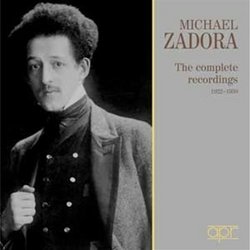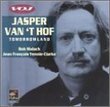| All Artists: Michael Zadora Title: Michael Zadora- The Complete Recordings, 1922-1938 Members Wishing: 0 Total Copies: 0 Label: APPIAN ( APR ) Original Release Date: 1/1/2009 Re-Release Date: 12/8/2009 Album Type: Import Genres: New Age, Classical Style: Instrumental Number of Discs: 2 SwapaCD Credits: 2 UPC: 5024709160082 |
Search - Michael Zadora :: Michael Zadora- The Complete Recordings, 1922-1938
 | Michael Zadora Michael Zadora- The Complete Recordings, 1922-1938 Genres: New Age, Classical
Michael Zadora is one of the most obscure pianists to have recorded prolifically in the 78rpm era. Only a handful of 78s have ever been reissued and no LP or CD has ever been devoted to him. It would appear that his concer... more » |
Larger Image |
CD Details
Synopsis
Product Description
Michael Zadora is one of the most obscure pianists to have recorded prolifically in the 78rpm era. Only a handful of 78s have ever been reissued and no LP or CD has ever been devoted to him. It would appear that his concert career was also not particularly high profile, yet from these recordings it seems he was a very significant artist. Zadora, a desciple of Busoni, seems to have been a rather reserved character, much more an intellectual than someone who enjoyed public performance and it is likely that family wealth allowed him the luxury of not having to pursue his career too aggressively. On the other hand, studio recording suited him very well indeed, and he seems equally at home in the standard repertoire, such as Chopin, and in more rarefied material, such as Busoni Sonatinas, where we are undoubtedly hearing an intepretation very close to that of the composer himself. Of particular interest are Zadora's own unusual transcriptions and also the workd of 'Pietro Amadis' who was actually a pseudonym of the pianist.
Similar CDs
| TOMORROWLAND Genre: Jazz | |
| Shakira Ojos Asi Genres: International Music, Rock, Latin Music Label: Sbme Import | |

 Track Listings (27) - Disc #1
Track Listings (27) - Disc #1

